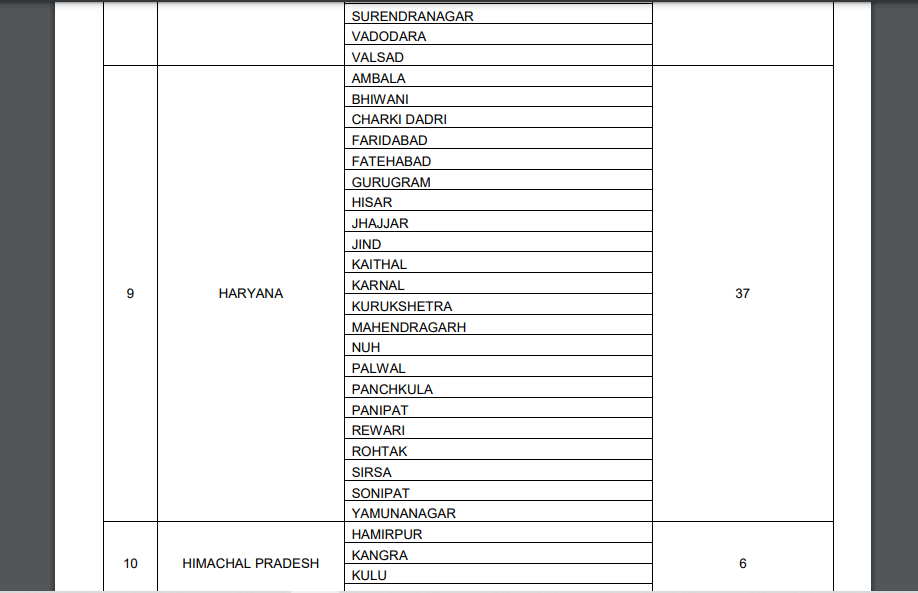Project Cheetah aims to reintroduce cheetahs to India after their extinction in the country over seven decades ago. A team of experts visited the Kuno National Park in April 2023 to review the project’s progress.
Project Cheetah, an ambitious initiative to re-establish the species within its historical range in India, was launched in September 2022. In April 2023, a team of experts from South Africa and India visited the Kuno National Park to review the current status of the project. The team was led by Adrian Tordiffe, a veterinary wildlife specialist, and included Vincent van dan Merwe, Manager of the Cheetah Metapopulation Project, Qamar Qureshi, Lead Scientist of the Wildlife Institute of India, and Amit Mallick, Inspector General of Forests, National Tiger Conservation Authority.

Project Cheetah: Restoring the Fastest Land Animal to India
The team examined all aspects of the project and submitted a comprehensive report on the way forward. The team observed that twenty cheetahs were successfully translocated to Kuno National Park in the initial phase of the project. The project hopes to provide up to 100,000 km2 of habitat in legally protected areas and an additional 600,000 km2 of habitable landscape for the species. Cheetahs fulfil a unique ecological role within the carnivore hierarchy, and their restoration is expected to enhance ecosystem health in India. The charismatic species can also benefit India’s broader conservation goals by improving general protection and ecotourism in areas that have been previously neglected.
Challenges Faced by Project Cheetah
The project of this magnitude and complexity faced many challenges, primarily because this was the first intercontinental reintroduction of a wild, large carnivore species, and there is no comparable historical precedent. However, due to careful planning and execution, all twenty cheetahs survived the initial capture, quarantine, and transport to the purpose-built quarantine and larger acclimatization camps in Kuno National Park in Madhya Pradesh.
Releasing the cheetahs into free-roaming conditions poses substantial risks. Like Kuno, no Protected Areas in India are fenced. Animals are thus free to move in and out of the park as they wish. Cheetahs, like other large carnivores, are known to range widely during the initial few months after being reintroduced into unfamiliar open systems. These movements are unpredictable and depend on many factors. After several months, the cheetahs should establish their own communication networks and settle down in relatively fixed home ranges. It is crucial that individual cheetahs do not become entirely isolated from the reintroduced group during this phase, as they will then not participate in breeding and will thus be genetically isolated.
Two points should also be noted regarding the carrying capacity of cheetahs in KNP. Firstly, it is impossible to determine the precise carrying cheetah capacity in KNP until the cheetahs have properly established their home ranges. Secondly, the home ranges of cheetahs can overlap substantially depending on the prey density and several other factors. While many have made predictions about the anticipated carrying capacity of cheetahs in KNP based on other ecosystems in Namibia and East Africa, the actual number of animals that the reserve can accommodate can only be assessed after the animals are released and have established home ranges.
Progress of Project Cheetah
To date, four of the cheetahs from Namibia have been released from the fenced acclimatization camps into free-ranging conditions in Kuno National Park. Two males (Gaurav and Shaurya) have stayed within the park and have not shown any interest in exploring the landscape beyond the borders of the park. A female named Aasha has made two exploratory excursions to the East of KNP beyond the buffer zone but has remained within the broader Kuno landscape and has not ventured into human-dominated areas.
The team inspected most of the cheetahs from a distance and evaluated the current procedures and protocols for managing the animals. All the cheetahs were in good physical condition, making it evident that the current management techniques are working well. However, the team did suggest some modifications to the current procedures, such as enhancing the fencing around the acclimatization camps, to avoid any incidents of human-wildlife conflict.
Furthermore, the team emphasized the need for continued monitoring of the cheetahs after their release into free-roaming conditions. This monitoring is crucial to assess the success of the project and identify any challenges that may arise. In addition, the team suggested conducting research on the prey base and the cheetah’s prey preferences to ensure that they have enough food to survive and thrive in their new environment.
Overall, the team’s visit was encouraging, and they expressed optimism about the project’s success. They noted that Project Cheetah is a significant step forward for India’s conservation efforts and will play a crucial role in cheetah conservation globally. India’s success in reintroducing cheetahs to their historical range will be a significant milestone for the global conservation community, and it is a project that is being watched closely by conservationists worldwide.
Conclusion
The reintroduction of cheetahs to India is a significant and ambitious project that has attracted global attention. While the project faces many challenges, the visit by the expert team, and their positive assessment of the current situation, is a good sign. It is essential that the project continues to be monitored carefully, and any necessary modifications are made to ensure its success. The reintroduction of cheetahs to India will have far-reaching benefits, including enhancing the ecosystem’s health and promoting ecotourism. We must continue to support this project and celebrate India’s efforts to restore a magnificent species to its historical range.
Do Follow us on Facebook and For More Updates Checkout our Website























